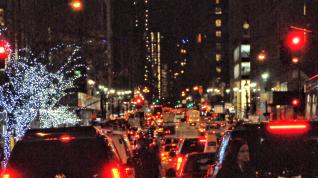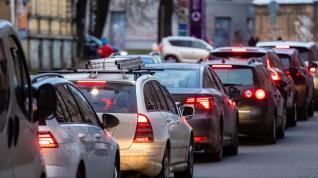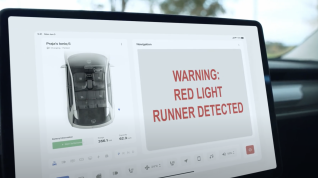Fully leveraging latitude and longitude in our day-to-day navigation is one of the most overlooked applications of this vast database of geographic co-ordinates.
The reality of working closely with city, county and state agencies to help make those districts “smarter” is that, as conceptual as some of the discussions can get, the end goal is always to improve the lives of residents and visitors by fully harnessing and leveraging various data points and technologies. These are conversations I have on a daily basis, but the various needs for such smart solutions can make themselves known in the most random of situations.
Which brings me to a frustrating but teachable situation I encountered on a recent trip to Florence, Italy.
A Tuscan Adventure
The car rental agency I opted for during my vacation to the delightful Tuscan city was located conveniently close to my hotel, making it the obvious choice for my pick up/drop off. Now bear with me…
The Europcar branch’s address was Via Forlanini 2 and, since we had already driven down that street in several taxis, I confidently set out on foot to find it. Seeing Via Forlanini 3 on my side of the road, I decided to cross over where I expected to see Via Forlanini 2, but instead was met with Via Forlanini 68 – a lovely apartment building but, alas, no cars for rental in sight.
Having crossed back over the street and asked some restaurant staff if they knew where Via Forlanini 2 was – they did not – I dashed down to the mall to look for the car rental office. No joy. So I went back to the hotel, proverbial tail between legs, to get directions.
Google Maps predicted an eight-minute walk back to my original location so, again, I was on my way following the usually comforting blue dots. I arrived at my destination (according to Google) and it was the back of an apartment building. Here we go again, I thought.
Final Destination
Fortunately, on my second retreat of the day I encountered a local and, in a bluster of broken Italian, asked her where the car rental agency was. She pointed me down Via Forlanini towards the intersection with Via di Novoloi. There, I found a well-hidden car rental agency sign that pointed me down a driveway to its office and the garage beneath.

This whole misdirected experience reminded me of a conversation I had a year or so prior with Sean Barbeau of the Center for Urban Transportation Research at the University of South Florida, where we spoke in depth about the limitations of the address in mapping over lunch.
Anyone familiar with GPS devices, whether standalone or integrated within our smartphones, would have no doubt experienced the disconnect between the navigation system claiming your journey is complete and the fact that you know there’s at least a few hundred feet to go.
Further still, the inability to type in the proper address – is it US 1 North or Route 1 N? – was another motivating factor in my discussion with Mr Barbeau, in which we questioned why we use the postal address when every navigation system can and does process the latitude/longitude co-ordinates. Wandering around Florence that day only served to reinforce this for me.
Eventually – and, I hope, sooner rather than later – we must evolve away from address-based navigation towards the far more precise lat/long of our destination, especially as we approach the advent of automated vehicles.
A Smarter Future
Just imagine an automated vehicle dropping you off exactly where you need to be – whether that is at the covered entrance to a hotel when it is raining or the restaurant entrance around the corner from the main hotel entrance for your business lunch. And if you need your car parked for you, simply plug in the co-ordinates listed on the establishment’s website, or better still on the calendar entry you saved when receiving the reservation confirmation, and be directed to the valet.
Or, say you or your automated vehicle would rather self-park – the on-street parking space that is empty right now, reserve it and navigate right to it because we know its lat/long and the space’s parking sensors are linked to a computer system that is linked to our navigation system.
I have even seen lat/long co-ordinates on business cards before, although to be fair it was from a mapping company, but they are cropping up elsewhere. See, for example, the co-ordinates listed for this Smart City conference were South Entrance: 41° 21´17, 04N, 2° 07' 39.95" E and East Entrance: 41°21'11, 9844"N, 2° 07´56.7834" E.
I also saw them on this shuttle from the Le Meridien Tampa on the streets of Ybor City.

The Google Test
Try this:
- Type any address or business name into Google Maps.
- Wait five seconds after the result appears and watch the URL address bar of your browser.
- After the @ symbol, you will see the latitude and longitude of your requested destination.
I mention this to highlight that many of the systems we rely on to get us to our destinations already use lat/long co-ordinates in their processes. So using less-precise inputs like a business name or postal address, which as we know from my Tuscan adventure, are unreliable to say the least, does not seem like the “smartest” use of the technology.
The Bottom Line
A truly smart city uses all data available to improve citizens’ mobility and quality of life. Transportation is a core part of that mission, so fully harnessing and utilizing the latitude/longitude of your destination, rather than the postal address, is one of many crucial updates we should work towards.
About the Author

Pete Costello is associate vice president, Transportation Systems at Iteris.
Connect with Pete on LinkedIn.








